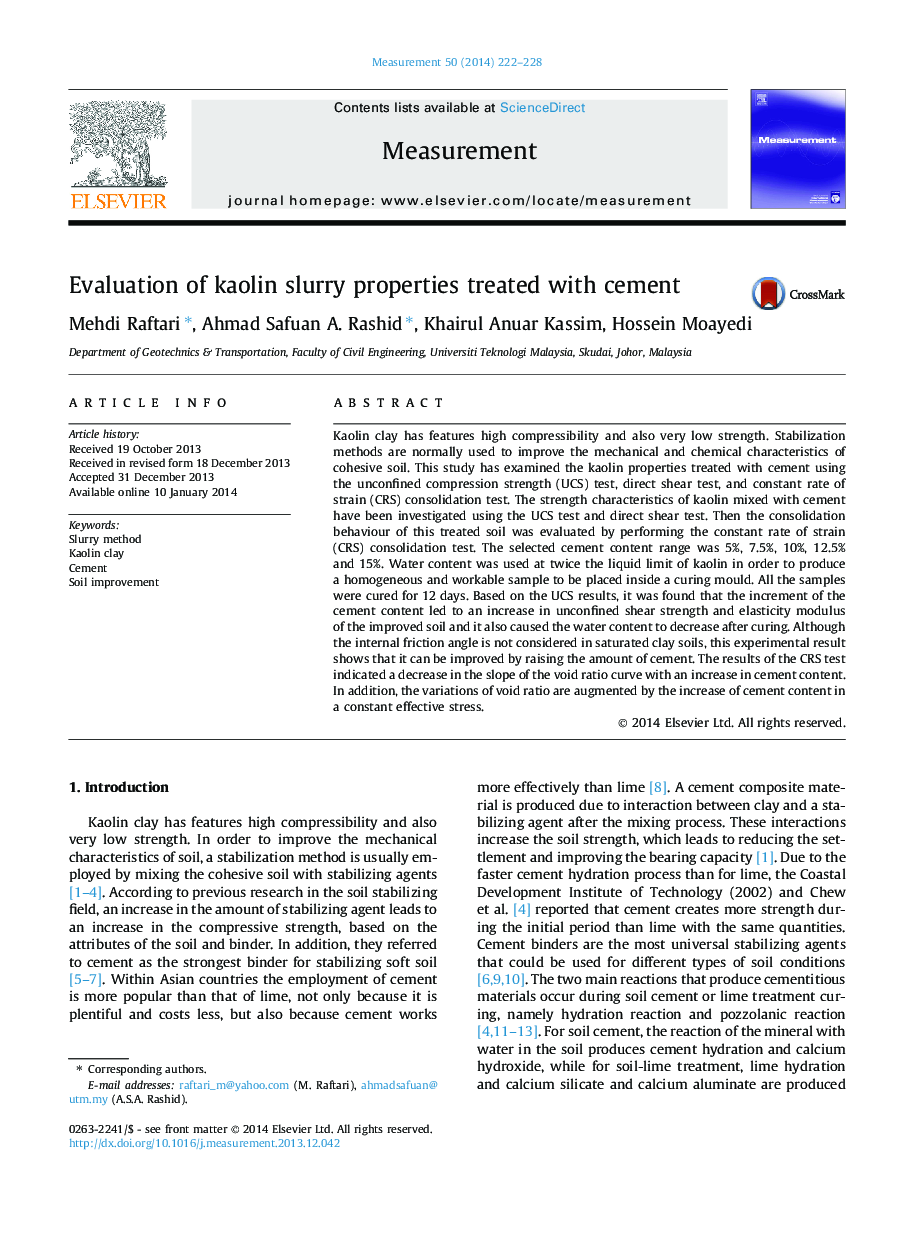| Article ID | Journal | Published Year | Pages | File Type |
|---|---|---|---|---|
| 730269 | Measurement | 2014 | 7 Pages |
•The elasticity modulus as linear increase with increase cement contents.•Increasing in cement makes a significant effect on cohesion of kaolin clay.•Increasing in cement causes to increase in consolidation yield stress in the CRS.•The raising of cement content increases the pre-consolidation pressure slowly.•An increase in cement content leads to a decrease in the slope of void ratio curve.
Kaolin clay has features high compressibility and also very low strength. Stabilization methods are normally used to improve the mechanical and chemical characteristics of cohesive soil. This study has examined the kaolin properties treated with cement using the unconfined compression strength (UCS) test, direct shear test, and constant rate of strain (CRS) consolidation test. The strength characteristics of kaolin mixed with cement have been investigated using the UCS test and direct shear test. Then the consolidation behaviour of this treated soil was evaluated by performing the constant rate of strain (CRS) consolidation test. The selected cement content range was 5%, 7.5%, 10%, 12.5% and 15%. Water content was used at twice the liquid limit of kaolin in order to produce a homogeneous and workable sample to be placed inside a curing mould. All the samples were cured for 12 days. Based on the UCS results, it was found that the increment of the cement content led to an increase in unconfined shear strength and elasticity modulus of the improved soil and it also caused the water content to decrease after curing. Although the internal friction angle is not considered in saturated clay soils, this experimental result shows that it can be improved by raising the amount of cement. The results of the CRS test indicated a decrease in the slope of the void ratio curve with an increase in cement content. In addition, the variations of void ratio are augmented by the increase of cement content in a constant effective stress.
